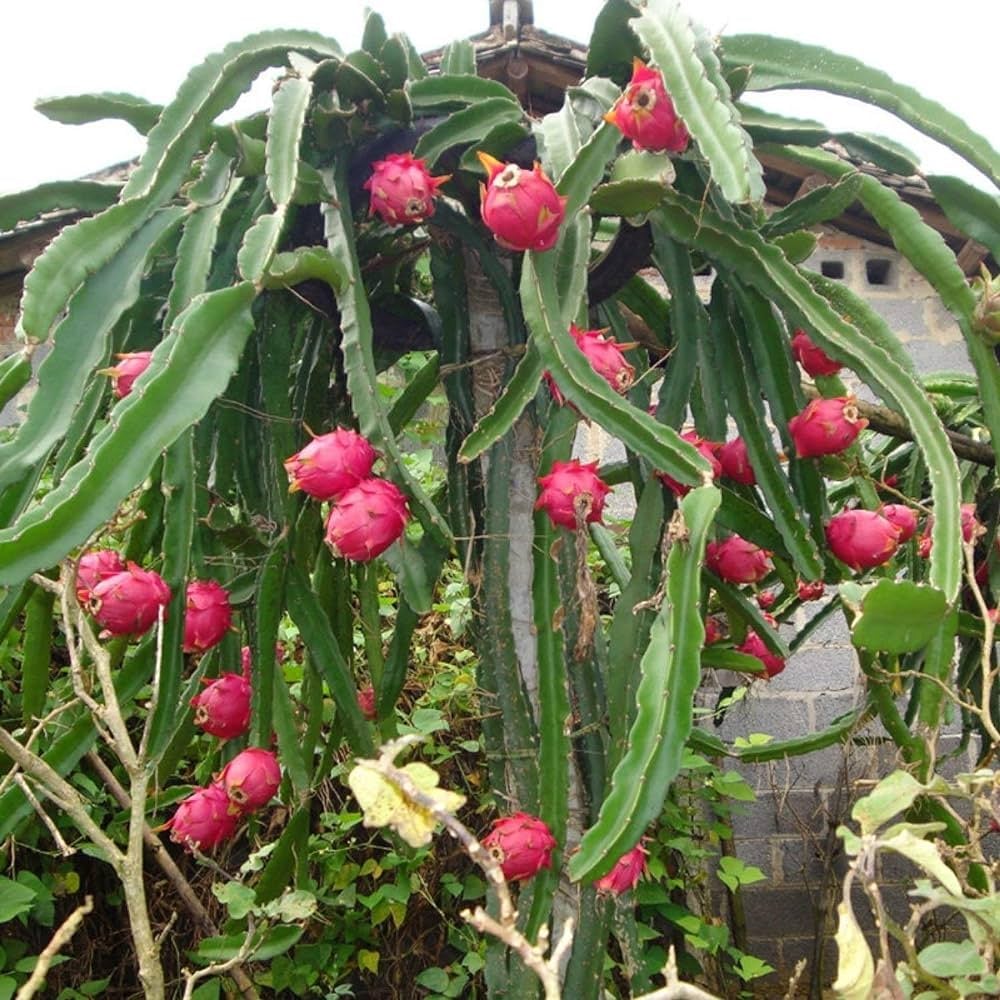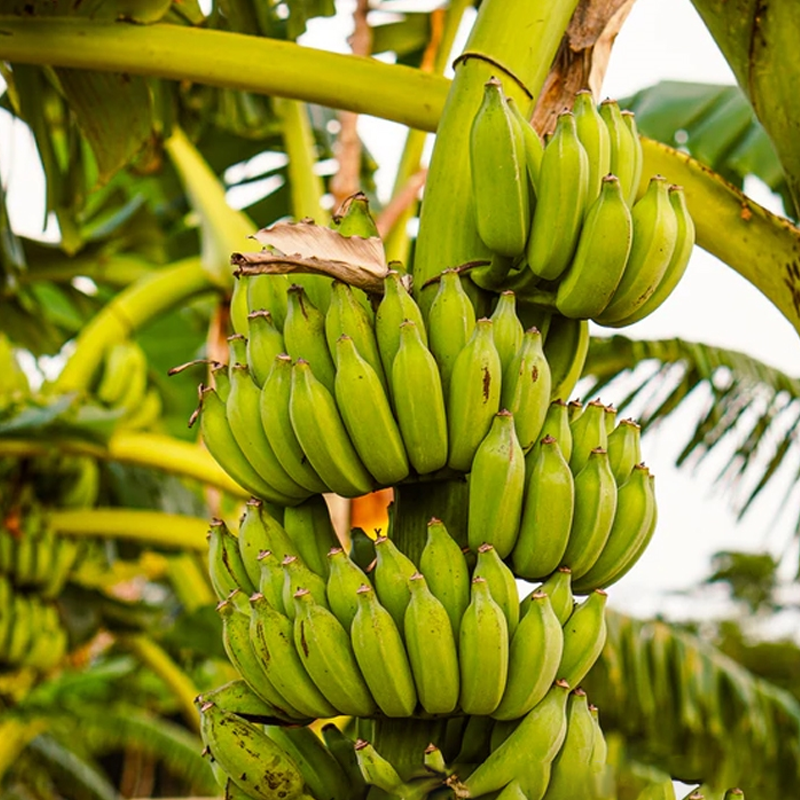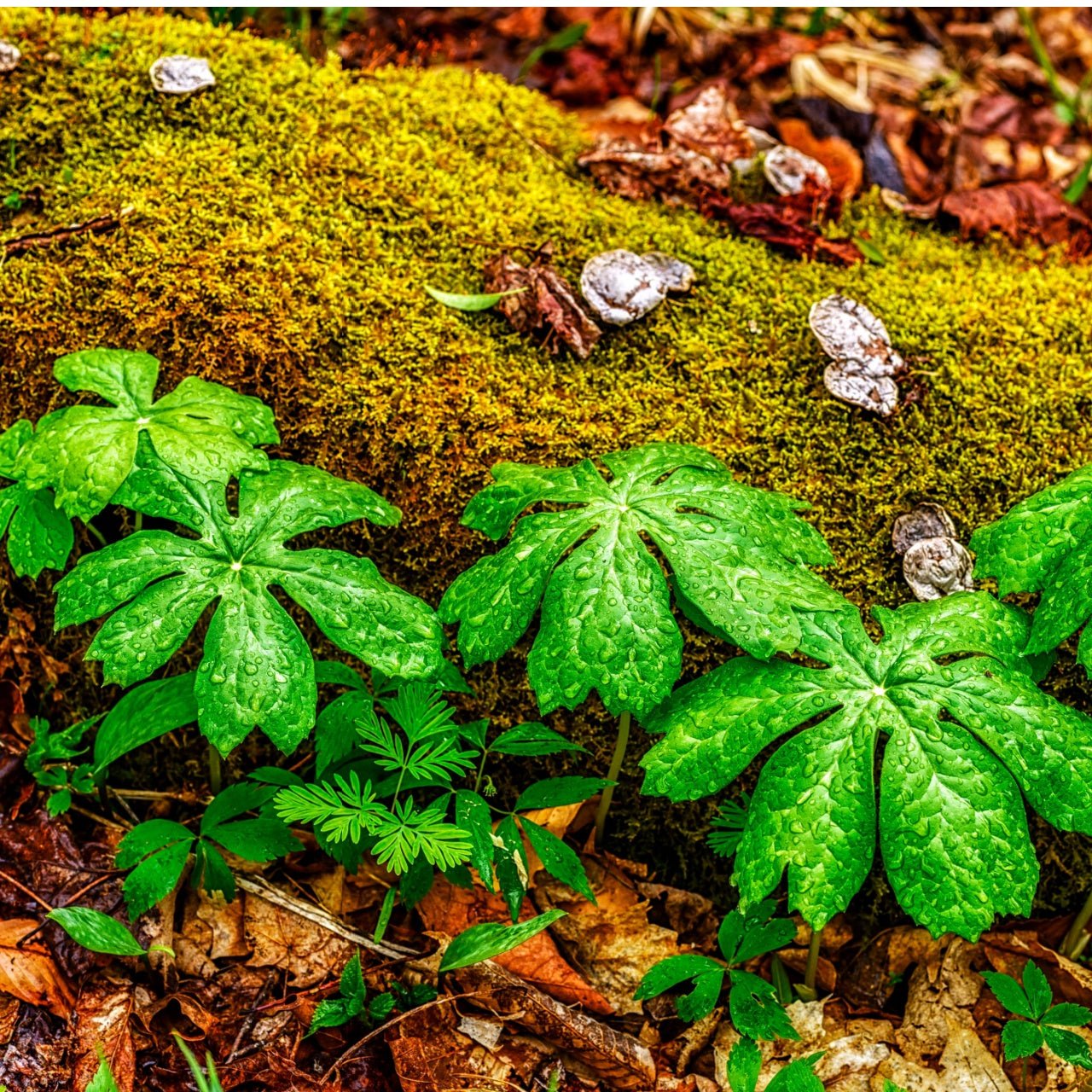

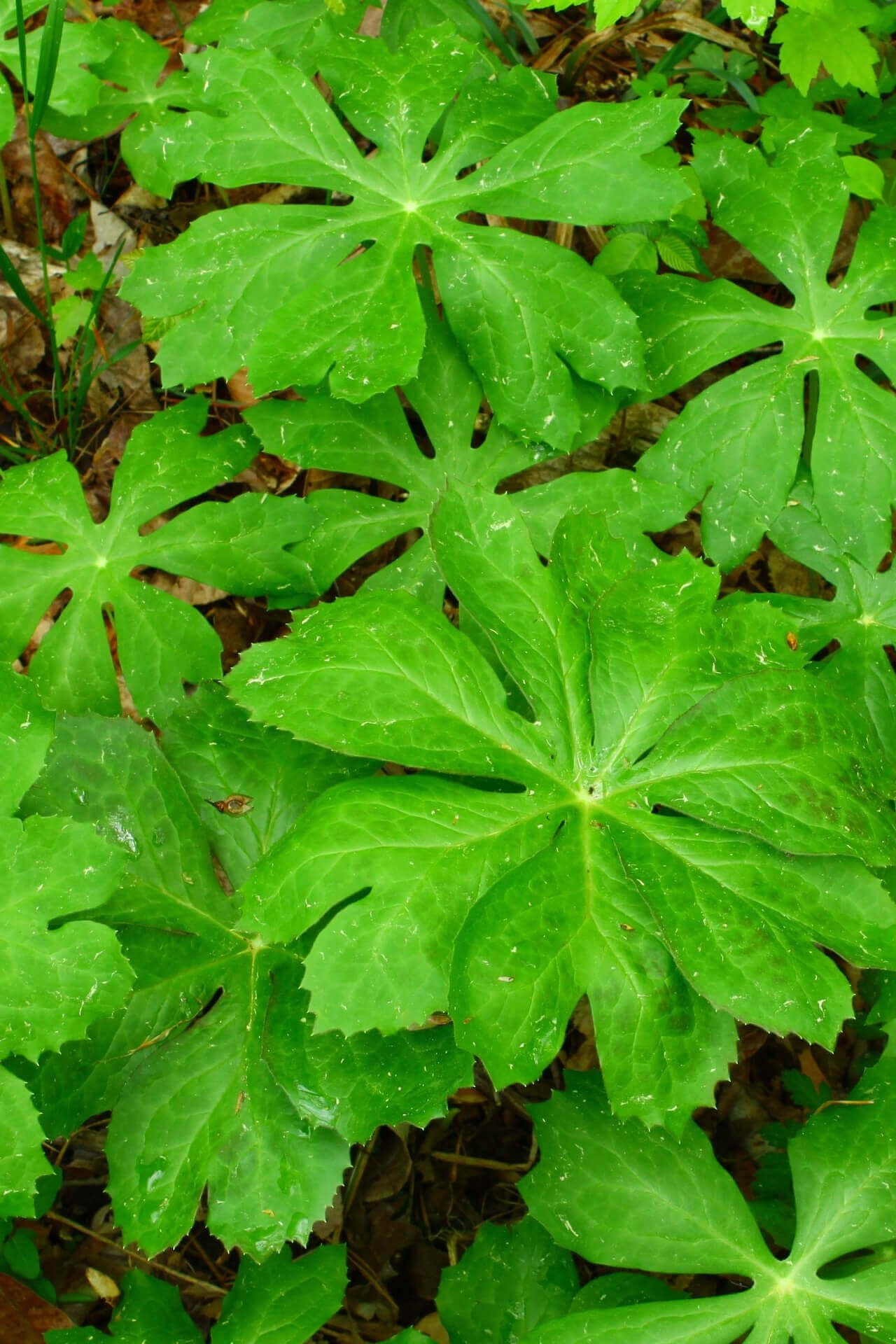
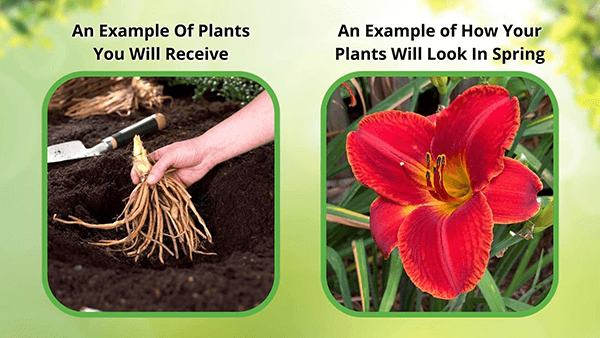
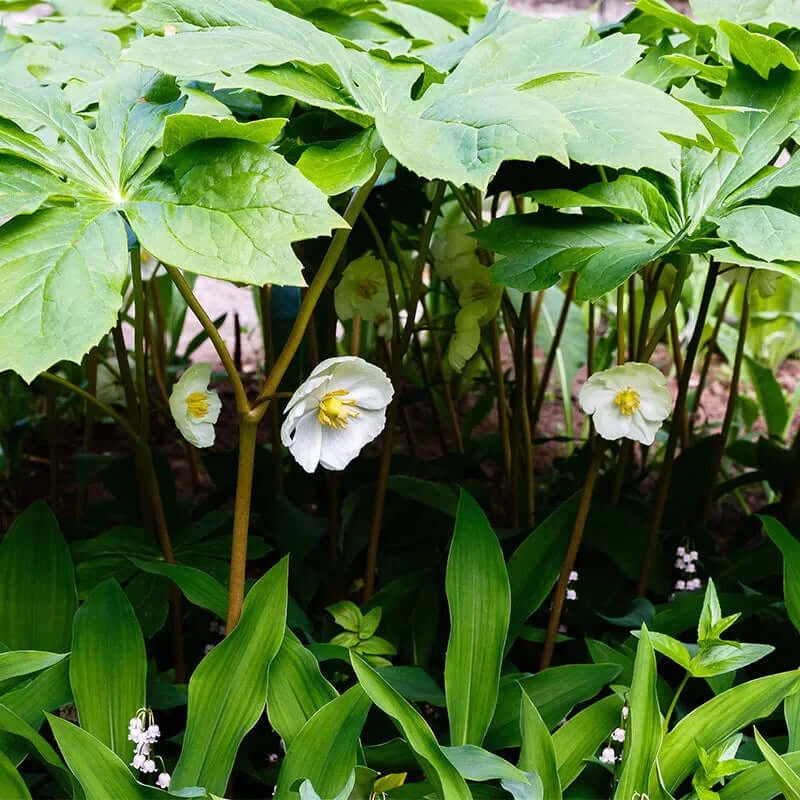
Mayapple
Beautiful white spring flowers
Attractive ground cover option
Low maintenance, easy care
Thrives in
ZONE 3ZONE 4ZONE 5ZONE 6ZONE 7ZONE 8This plant ships:
Ships Week of May 5thMayapple – Podophyllum peltatum
The Mayapple is a charming U.S. native that carpets woodland floors with umbrella‑like foliage. Each slender stem rises about 18 inches and supports one or two palmately lobed leaves. In early spring, a single nodding, cup‑shaped white flower with yellow stamens appears beneath the canopy. When pollinated, the blossom ripens into a fleshy green fruit—resembling a tiny apple—that later turns yellow and fragrant.
Plant Details
Family: Berberidaceae
Hardiness Zones: 3 – 9
Light Requirement: Partial sun to partial shade
Water Needs: Moderate
Height: 12 – 18 in
Spread: 8 – 12 in
Growth Rate: Moderate
Bloom Time: Late spring
Flower Color: White with yellow stamens
Wildlife Value: Attracts pollinators; fruit eaten by woodland animals
Notable Characteristics
Mayapple stems arise from a creeping rhizome, creating dense colonies of lush ground cover. Although the ripe, yellow fruit has been used for jams, all plant parts are poisonous if consumed in quantity. Box turtles relish the fruit and, after digestion, help seeds germinate 40 percent more successfully than seeds left on the forest floor.
Landscape Uses and Maintenance
Ideal beneath pines or in any partly shaded, medium‑moist, well‑drained soil, Mayapple is deer‑ and rabbit‑resistant and largely pest‑free. It emerges early in spring, then goes dormant after fruiting; pair it with later‑blooming perennials to keep woodland gardens lively all season.
Noteworthy Traits: Dense ground cover, pollinator appeal, fruit enjoyed by wildlife. Add this fairytale woodland perennial to your shade garden for dependable spring beauty year after year.
This Is How Your Plants Will Look upon Delivery
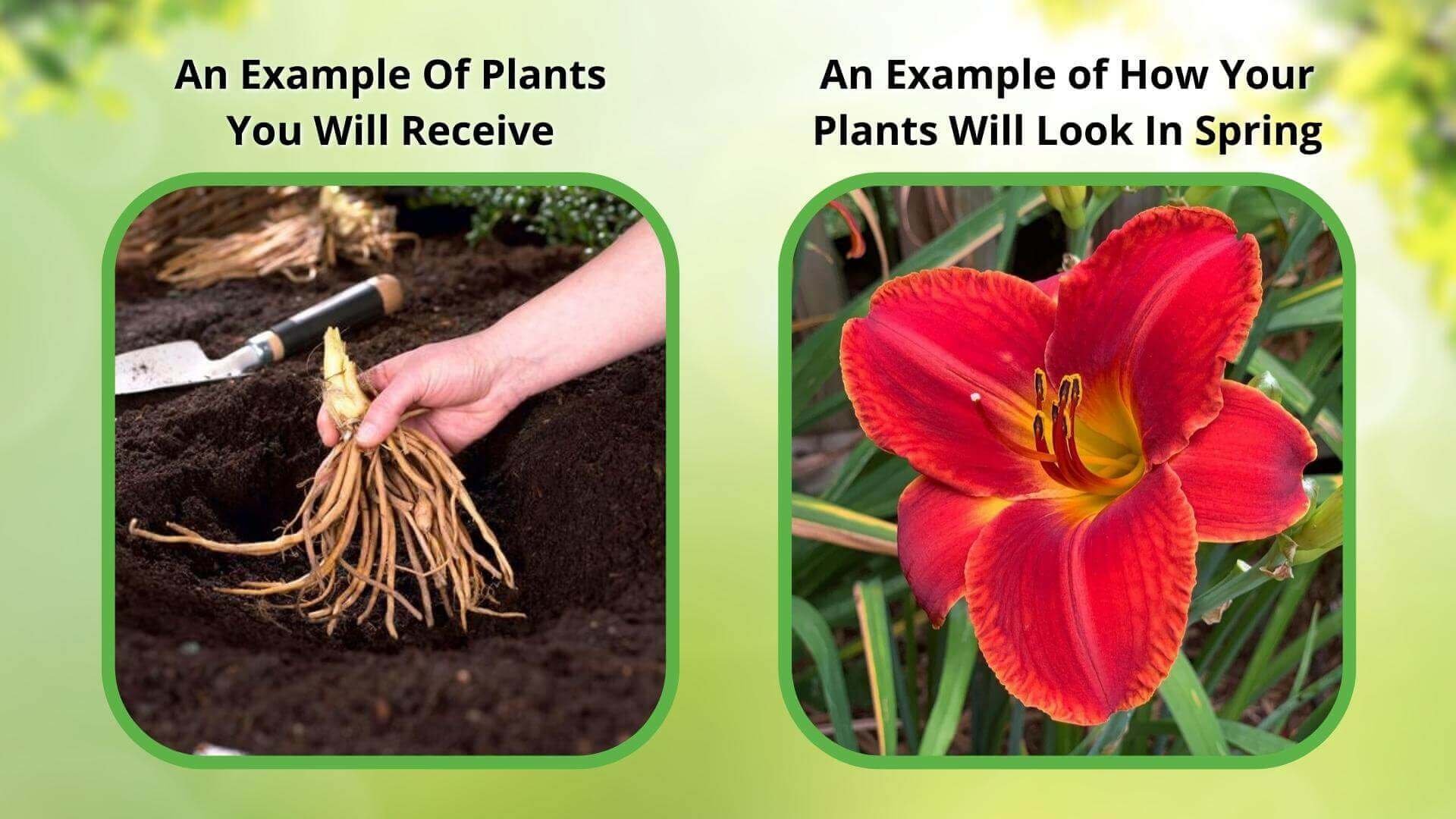
Bloom Season
Spring
Bloom/Foliage Color
White
Height at Maturity
Under 12"
Care
Mayapple thrives in well-drained, rich soil and requires consistent moisture. Mulch near the ground to maintain soil dampness and prevent weeds. Water regularly, particularly in dry periods. Avoid disturbing the roots, as they are sensitive to transplantation.
Plant Reproduction
Mayapple spreads by rhizomes; specialized underground stems that send up new shoots.
Shipping date depends on the date displayed and chosen when you order from the product's page.
We only accept returns on plants verified dead. If you think your plants have died, we offer a 1 year warranty, please use this File a Claim Link to verify dead plants and start with return warranty process.






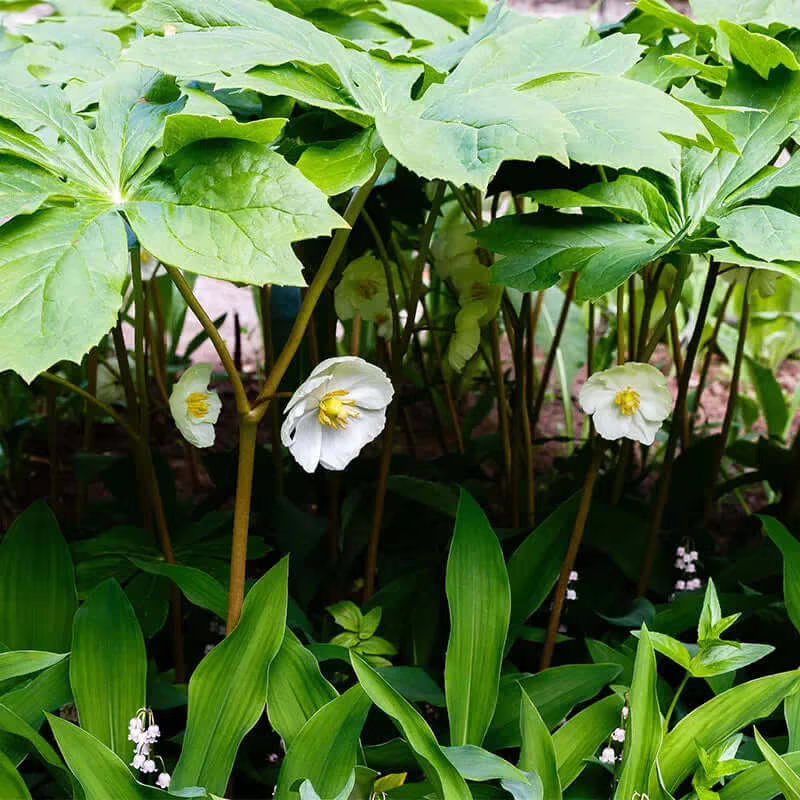
Interesting Flowers:
Produces white flowers that turn into ornamental fruits for year-round interest.
Shade Tolerant:
Thrives in low-light conditions, perfect for shaded gardens.
Natural Look:
Enhances woodland or naturalistic garden designs with its unique appearance.
Unique Foliage:
Mayapple’s umbrella-like leaves add distinct charm to shaded areas.
Caring Tips
How do I care for my Mayapple?
Each box contains detailed care instructions and information about your product. But here's the basics.
Care Tips
Mayapple thrives in well-drained, rich soil and requires consistent moisture. Mulch near the ground to maintain soil dampness and prevent weeds. Water regularly, particularly in dry periods. Avoid disturbing the roots, as they are sensitive to transplantation.
Light Requirements
Mayapple (Podophyllum peltatum) thrives in dappled or filtered light. It prefers the shaded understory of deciduous forests, where it acquires morning sun and afternoon shade. Too much direct sunlight can lead to reduced growth and leaf scorching.
Hardy Planting Zones
3 • 4 • 5 • 6 • 7 • 8
Header
Use this content to share information about your store and products.
Frequently Asked Questions
How often should I water my plants?
How do I know if my plant is getting too much or too little sunlight?
What should I do to prepare my plants for winter?
What are the signs that my plant needs fertilizing?
How can I prevent pests from damaging my plants?
How do I choose the right plant for my climate zone?



